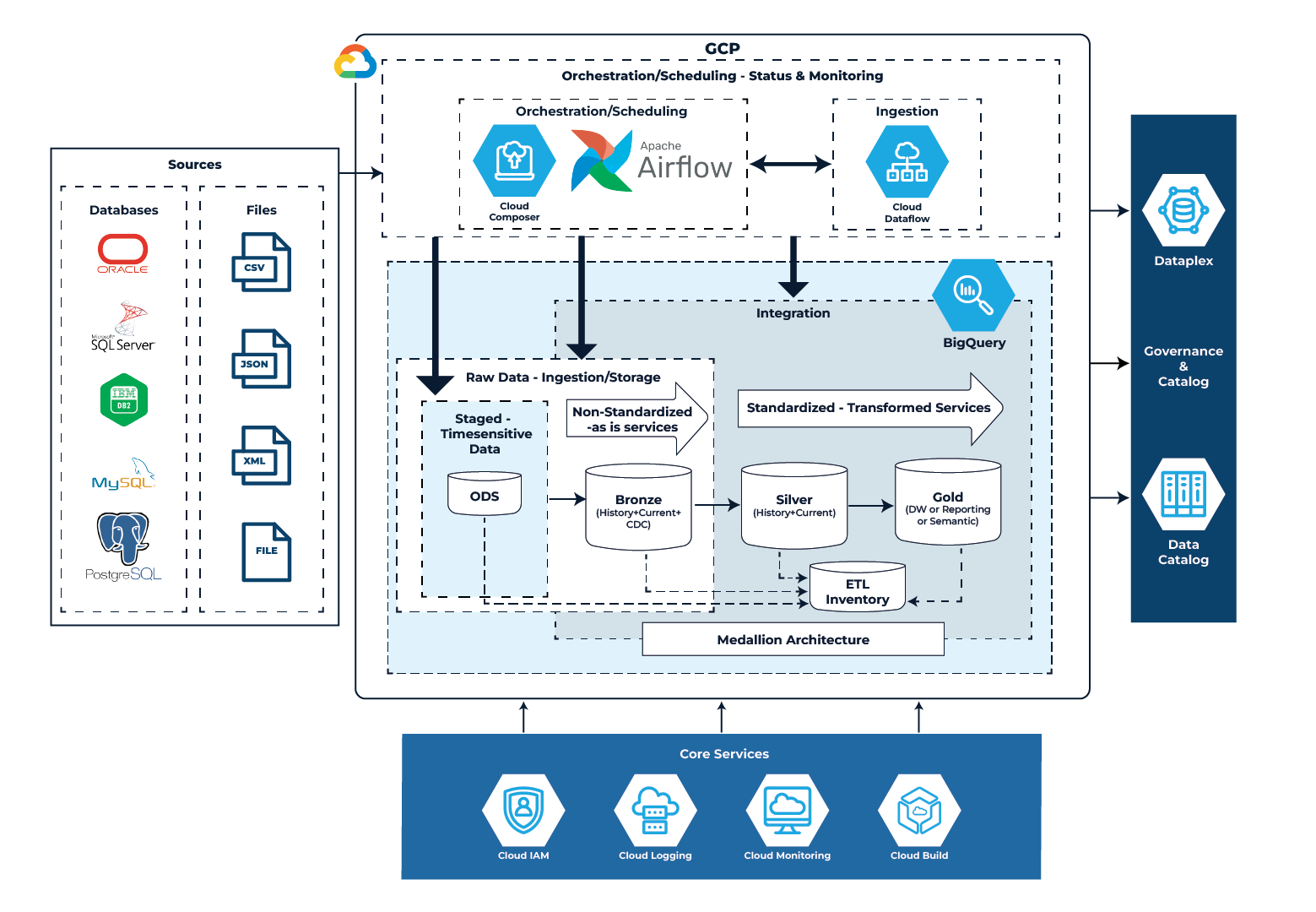Introduction
As data landscapes evolve, organizations that once relied heavily on tools like Talend for their ETL workflows are facing a strategic inflection point. Many are now seeking scalable, cost-effective, and cloud-native alternatives that better align with modern data engineering practices. Google Cloud Platform (GCP), with BigQuery at its core, offers a powerful foundation for migrating and modernizing these legacy pipelines. Let’s explore why and how you can migrate all existing Talend workflows to GCP-native services, unlocking higher performance, lower costs, and a future-proof data platform.
Why Modernize Talend Workflows?
Lower Operational and Licensing Costs
Talend’s licensing model, particularly for the enterprise edition, can be cost-prohibitive, especially as data volumes and the number of ETL jobs grow. GCP-native services such as Cloud Dataflow, Cloud Composer and BigQuery eliminate licensing fees and use a pay-as-you-go model, making budgeting more predictable and scalable.
Improve Performance and Reliability
Talend’s GUI-based design introduces performance and maintenance overhead as pipelines become more complex. GCP services are built for scale, offering distributed computing, parallelism, and autoscaling that Talend lacks natively. Services like BigQuery process petabyte-scale queries in seconds, significantly improving your SLA adherence and responsiveness to business needs.
Enhance Developer Productivity
With flexible development environments like Cloud Composer (based on Apache Airflow), Dataflow (Apache Beam) and support for Python, Java and SQL, GCP allows teams to define ETL jobs as code. This code-first approach encourages CI/CD, automated testing and version control by enhancing maintainability and onboarding.
Seamless Data Ingestion into BigQuery
Whether batch-based, event-driven or streaming, you can preserve the existing ingestion strategies by leveraging Cloud Composer, Cloud Functions, Pub/Sub, Cloud Storage or Dataflow Transfer Service to feed data directly into BigQuery. This ensures business continuity while enhancing pipeline reliability.
Future-Proofing with Industry Best Practices
Migrating to GCP aligns your data architecture with leading-edge technologies. Whether you’re building a modern Data Lakehouse or implementing real-time analytics, GCP-native ETL services provide a strong foundation for AI/ML integration, advanced governance, and composable data architectures.
Key Technical Differentiators and Strategic Advantages
To overcome the limitations of Talend, we must address its known bottlenecks
- High Licensing and Operational Costs: Enterprise licenses and on-prem infrastructure upkeep inflate the total cost of ownership
- Scalability Constraints: Talend’s engine struggles with large-scale distributed processing
- Maintenance Complexity: GUI-based logic makes versioning, testing, and refactoring error-prone, especially when collaborating across teams
- Limited GCP Integration: Native integrations with GCP services ( eg., Pub/Sub, BigQuery, Dataflow) is limited or requires complex adapters
By contrast, GCP-native services offer:
- Serverless compute (Dataflow, Cloud Run)
- Declarative orchestration (Cloud Composer)
- Built-in monitoring (Cloud Logging & Monitoring)
- Seamless IAM integration for secure access control
GCP-native services (Migrated and Modernized) Architecture
Key Reimagining/Migrating Strategies & Performance Insights
| Migration Strategy and Modernization Approach | Performance Metrics | Insights |
| Cost Analysis – From Talend to GCP | Assess Current Costs |
|
| Estimate Migration Costs |
|
|
| Development Expenses |
|
|
| Operational Expenses |
|
|
| Compute Cost Estimation | Key Cost Components |
|
| Source System Considerations |
|
|
| ETL Workload Breakdown |
|
|
| Optimized Architecture: Future-State Blueprint
|
Architecture Assessment and Design |
|
| Phased Migration Plan | Adopting a phased approach minimizes risk and accelerates time-to-value | Discovery & Planning
Foundation Setup
Pilot Migration
Full Migration
Optimization and Scaling
|
Conclusion
Whether you’re just starting your cloud journey or deepening your investment in GCP, Migrating Talend ETL pipelines to GCP-native services is more than a cost-cutting exercise. It’s a strategic modernization initiative that lays the groundwork for a data-driven enterprise. With tools like BigQuery, Dataflow and Composer, your organization can transform legacy workflows into efficient, scalable and intelligent data pipelines. We have successfully assisted numerous clients across various industries by implementing our well-defined and proven approach. Our expertise enables organizations to leverage our services effectively, driving measurable results and sustainable success.






